This months review of Bitterleaf Teas’ 2019 Pretty, Pretty, Pretty Good is coming in a bit late because it has required a bit of investigating on my part. What do you do when a tea you’ve been loving for months suddenly tastes bland and boring? I’ve had some concerns about my storage for the last while, as some changes in my house and forced me to leave my pumidors on the second floor, which is significantly cooler than the main floor (about 15C for the last couple months). As this concern has already been in my head for a bit, my immediate thought was that temperature was the cause of a dull session, but I wanted to do a bit of research and see if I could draw any solid conclusions to add to my review. The rest of this post is as I wrote it last week, then at the end I’ll add on my findings.
If you would like to read my past tasting notes on this tea, please click here.
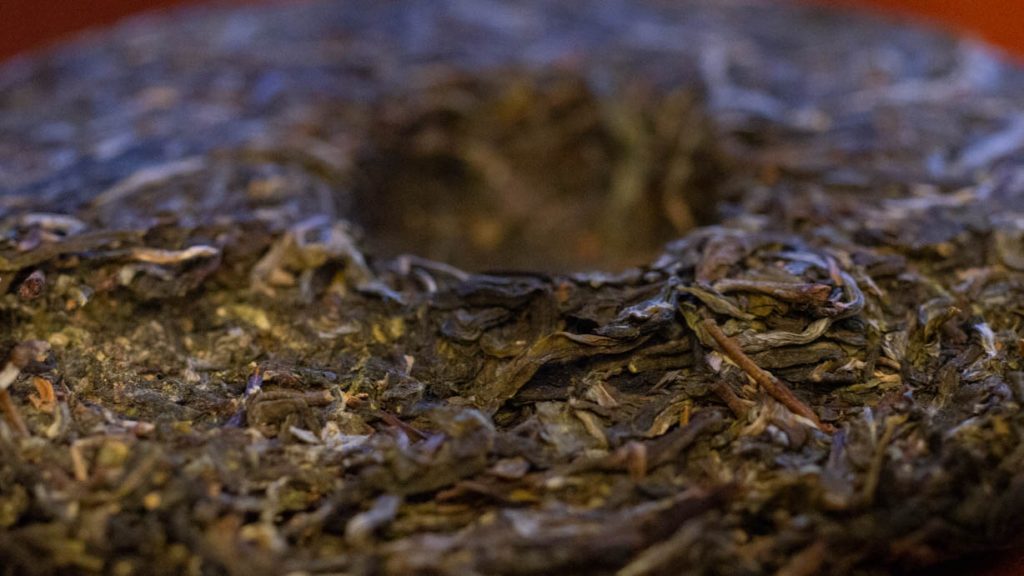
Breaking the Cake
The cake has almost no aroma whatsoever, even getting my nose right into it there isn’t much of a notable scent. After letting the leaves sit in my warmed gaiwan for a little bit they start to come alive, and more so after a rinse, but it still feels muted. I am getting notes of hard candy and some general floral scents with not much else going on.
For this session I am over leafing a bit more than normal, using 3.92 grams of tea in my 55ml gaiwan. Water temperature is 90C and infusion times are starting at five seconds and increasing by five each additional steeping.
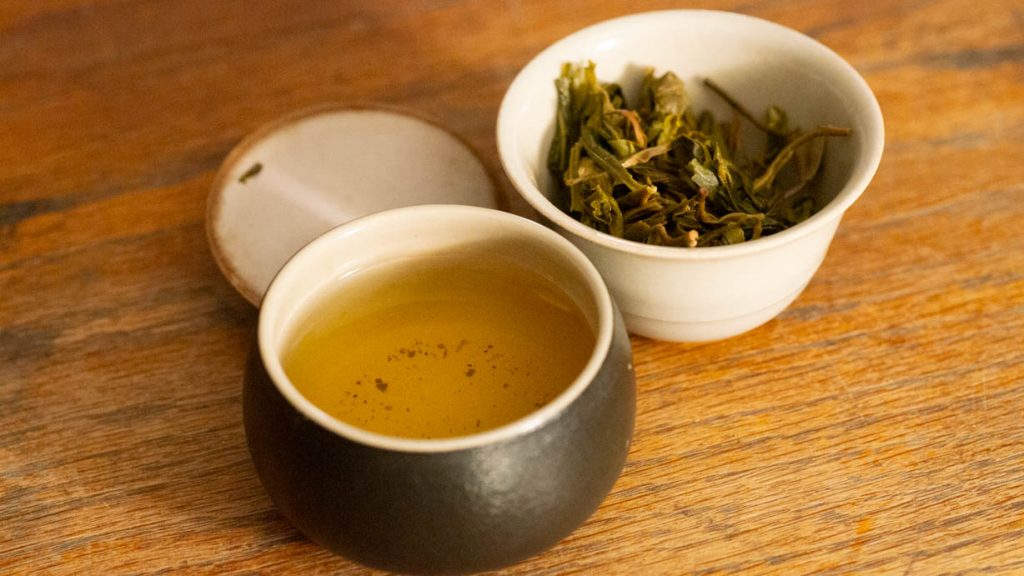
Infusions 1-3
The most up front note in the first infusion is one of sweet pear, with a light bitterness and astringency in the back ground. Infusion two gains a a little bit of spice and a bit more astringency. The texture is smooth and buttery with a medium thickness and sweet, faint aftertaste. The third infusion has an increase in the general midrange – more a feeling of presence than a taste. Overall flavour production is up a bit, but still meek. Pretty, Pretty, Pretty Good feels mild today. There isn’t any negative or off notes, but it’s pushing into bland territory.
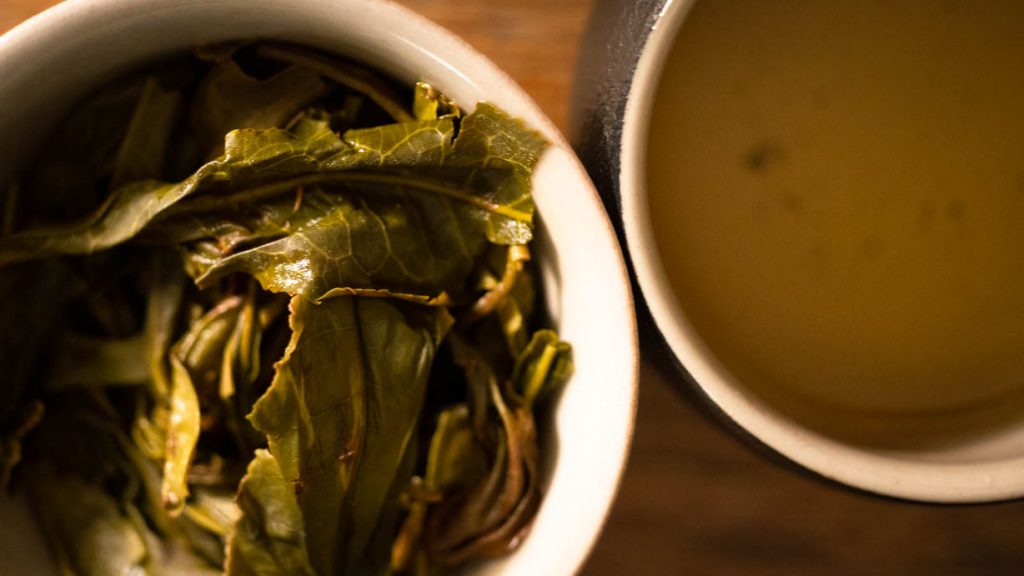
Infusions 4-6
Infusion four picks up a little bit, with a slight woody and mineral taste. Still, I really have to search for things here, nothing is jumping out at me. Infusions five and six get a bit milkier in both flavour and feeling, and all highs and lows drop off leaving you with just a mid “oomph.” The finish is almost non-existent. I get a wee little bitter hit for a split second that disappears by the time I finish swallowing.
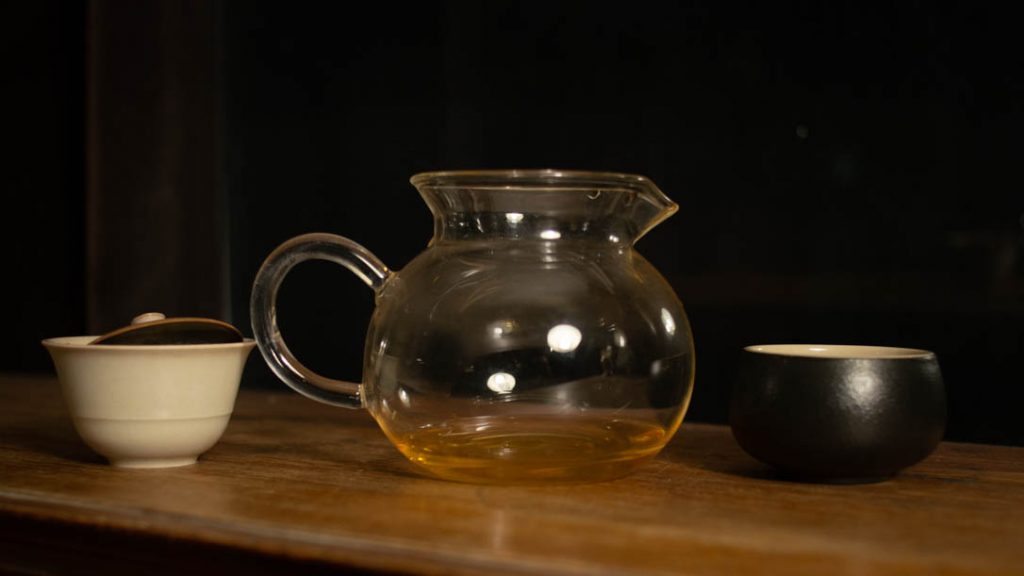
Infusions 7-10
The seventh and eighth infusions are more dull than the last, and I think I probably could have ended my session at the sixth without missing anything. I wanted to see if I could pull out anything redeeming here, so I upped my water to a full boil and increased my infusion times to 70 seconds for infusion 9 and 90 seconds for infusion 10. This brought some new life into the tea and gave it a bit more kick but still was nowhere near where I thought it should be.
Final Thoughts
So – that wraps it up from my notes from last week. Pretty, Pretty, Pretty Good has become one of my favourite 2019 shengs over the last few months, so this session felt like a let down. If I didn’t already have a history with this tea and was sampling as a one off it probably would have left a bad taste in my mouth, but I know it is much better than this so this left me a bit concerned. As I said above, I had a feeling that the root issue here was my cold storage, but before going into full blown storage panic mode I wanted to do some reading and talk to people more knowledgeable and experienced than myself.
My research came up more or less blank, cold storage isn’t a topic I can find much about. Generally speaking you’ll see people recommend hotter than cooler storage, but no discussion on what happens in cool storage seems to occur. So this brought me to chatting with some tea friends and Jonah from Bitterleaf. Most people I talked to felt that sheng puerh will go into a mini hibernation during the winter months and become more subdued for a while. A handful of these people also weren’t sure if this was actually happening or if it was just in their heads, but seeing as they all noticed it, I’d lean towards it being a legit thing. Everyone also agreed that the tea will bounce back in spring and I shouldn’t worry about any long term affects.
Jonah offered another opinion. He has noticed that puerhs do dull in the colder months, but also noted that this very well could simply be the ups and downs of a young puerh and probably not something I should be concerned about. These ups and downs are the reason I wanted to do these monthly reviews in the first place, but this puerh has been so steady that the thought left my mind.
So to summarize, my storage could be totally fine and this could just be an expected dip in the early life of a sheng. Or maybe I should expect everything to be muted until temperatures start to rise in May. Or maybe it’s a combination of both. Currently, there’s no real way to tell but long story short, I’m not going to worry about it. I will do another mini experiment though on this, so check back in the next month or two for more details and results on that!
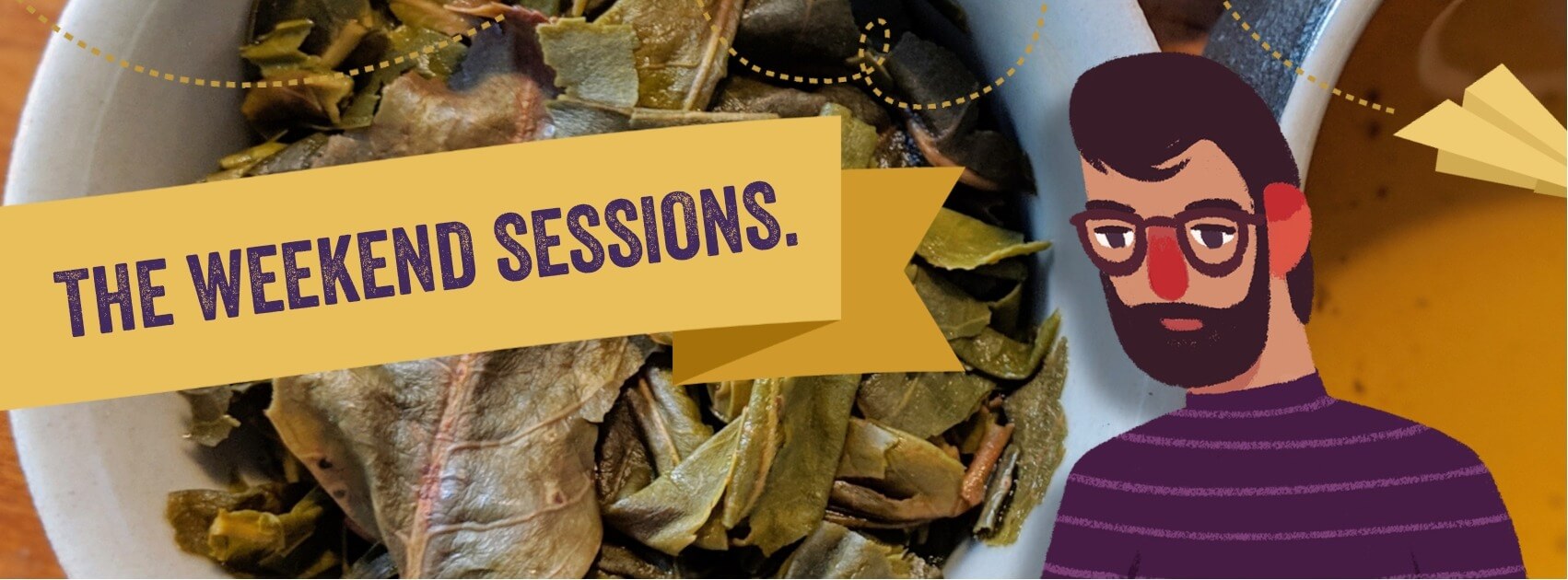
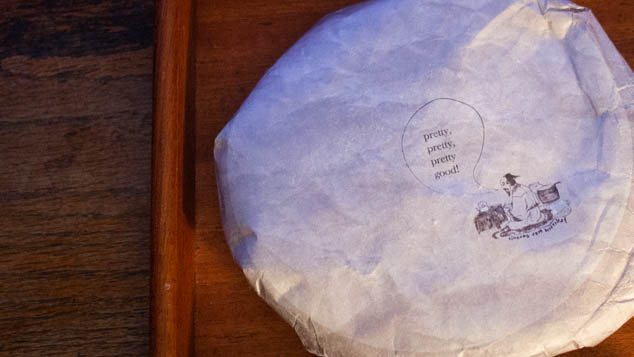
Have you read The Half Dipper?
He has written quite a bit about (natural) storage in a cold climate. He is in Oxford UK. Look in the “musings” section.
Also great notes on teas that can still be found online.
Thanks for the heads up! I love the Half Dipper and have spent a lot of time reading through his notes, but I’ve never checked out other sections of the blog. I’ll give that a read this weekend.
Interesting implementation of cold storage. As you’ve already mentioned I have yet to encounter a similar practice for reference or to learn from. Whilst I have experienced the ups and downs of puerh tea that comes about with different phases of ageing and under the influence of the weather, I also feel different teas develop very differently. It’s why I find it useful to have a variety of puerh tea in stock. Gives me an idea of what to aim for in terms of what is good, passable and what to avoid. Having a varied stock also allows me to assess things with better clarity. If all the tea in my stock is turning bad, I can be pretty certain my storage is off but if that negative development only effecting a certain type of tea or one particular batch then I can assess things differently.
I enjoyed reading your blog and out of the box ideas. Its early days , I don’t doubt more clarity will be revealed in time.
Best of luck, Varat
Thank you for the kind words!
I think part of my problem is my drinking style. You say you can evaluate your storage by the overall feelings across multiple cakes, but I jump around from tea to tea and don’t go back often enough that I likely don’t pick up on this. I’ve noticed it with this cake, but it’s the one I drink most frequently and know the best out of any in my pumidor. I should probably make a point of revisiting my cakes frequently to get a better overall feeling of how the storage is going.
“but seeing as they all noticed it, I’d lean towards it being a legit thing”
Hmm. We don’t know if each of these constitutes multiple independent observations, or one observation repeated by many people. I.e. we cannot eliminate the power of suggestion nor confirmation bias.
You are absolutely right. I think a better way of putting it would be that for my purposes, having some people confirm the same thing is good enough. I’m not about to go preaching it as gospel, but having a dozen or so people confirm they also notice their sheng dulls in the colder months is enough to make me not stress about it.
One person recommended that I simply take a chunk or two off the cake, move it to a warmer area of my house for the next month or two then compare and see how they are. I think that’s a great idea and likely next month will post some side by side tasting notes, or at least a little footnote at the bottom of my regular review. Again, not a perfect experiment by any stretch, but good enough to satisfy my curiosity.
I ordered a sample of this tea during the Bitterleaf anniversary sale, then found your review after searching for other’s thoughts due to a similarly insipid session. I was particularly taken aback by how hollow the tea was – all metallic/mineral/herbal high notes and textures, nothing in the mid or low range, too short of an aftertaste. Anyway, I mention this because my sample shipped at the very end of November and probably would have only experienced good old American “cold storage” while in transit and then at my very cold house for a maximum of three weeks. I can’t help but wonder what the tea tastes like in Bitterleaf’s Kunming storage right now, and what are the factors that can cause a tea to change characteristics in such a short time.
Another thing to note that I was unaware of, is Kunming actually gets decently cold. I assumed it was year round warmer, but this week has highs of 14-20C and lows of 0-4C. Because it’s not consistently cold, Jonah says most places don’t have heating so puerh stored there actually does go through periods that match up with my storage, if not being stored colder.
I have tried a couple other puerhs I’ve am more familiar with and have noted they all taste a bit subdued, but nothing as drastic as I’ve noticed here. Maybe the cold is affecting it more than others for some reason, maybe it’s just normal ups and downs of a young sheng, or maybe a combination of both.